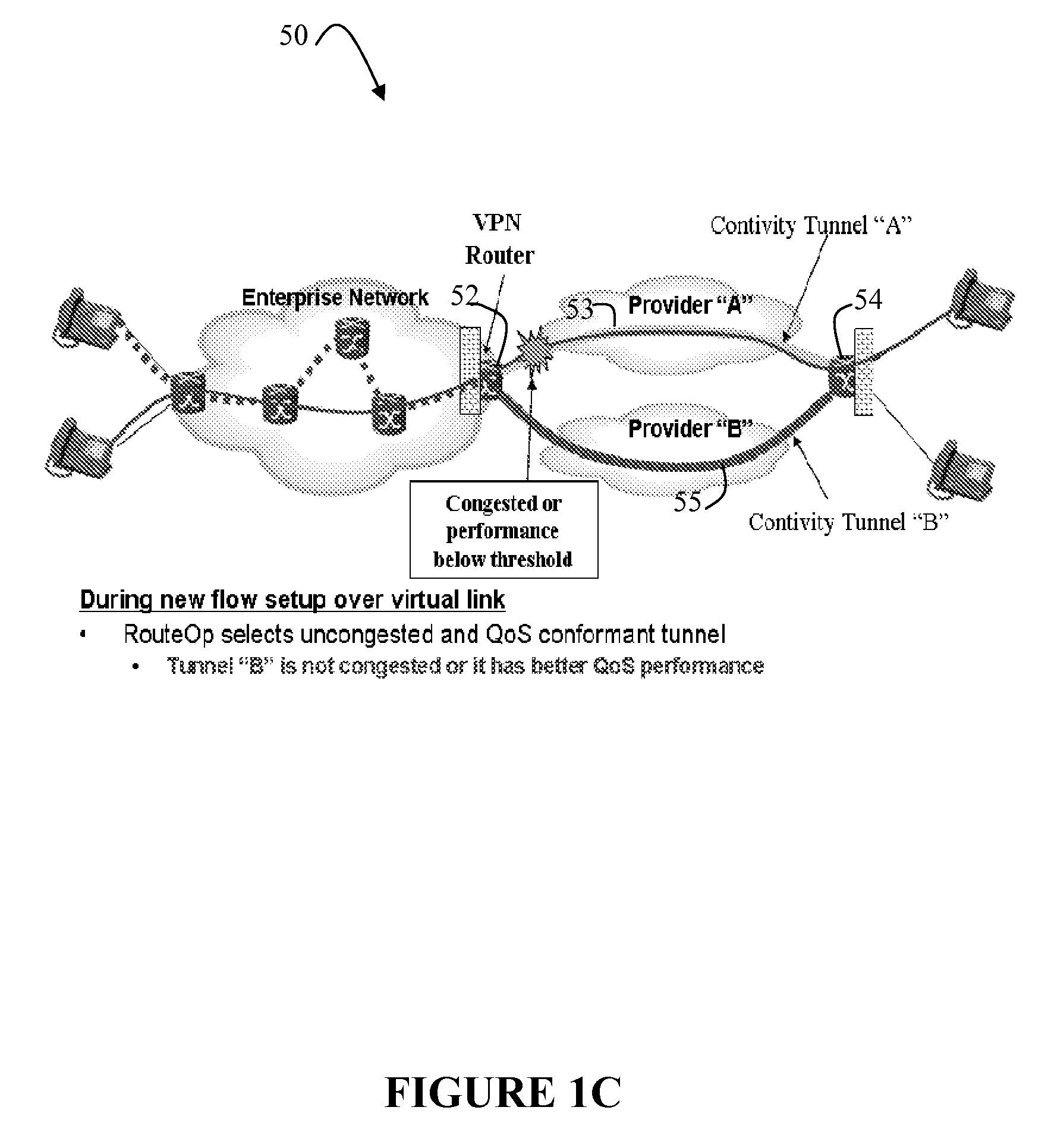Route Optimization Using Measured Congestion
a technology of congestion and route optimization, applied in the field of networkwork, can solve the problems of unfavorable service quality, unfavorable quality of service realized, and ineffective solution,
- Summary
- Abstract
- Description
- Claims
- Application Information
AI Technical Summary
Benefits of technology
Problems solved by technology
Method used
Image
Examples
Embodiment Construction
[0011] Voice over Internet Protocol (VoIP) is the convergence of traditional voice delivery on the data, or packet switched, network. VoIP protocols have two components: a control flow and a data flow. The control flow uses protocols such as Session Initiation Protocol (SIP), H.225 (for H.323), or Media Gateway Control Protocol (MGCP). The data flow or “media” component uses Real-Time Transport Protocol (RTP) and Real-Time Transport Control Protocol (RTCP). The control flow sets up the VoIP call signaling between the IP Phones or “end-points” (residing at end-user location) and the call manager or proxy (residing at service provider or HQ / central location). Once this handshake is established and determined to be valid and allowed by the security policy, then the media (or voice data) can flow through. The term ‘flow’ as used herein refers to a VoIP flow, but it should be mentioned that the present invention is not limited to VoIP, nor is the invention limited to the transfer of voic...
PUM
 Login to View More
Login to View More Abstract
Description
Claims
Application Information
 Login to View More
Login to View More - R&D
- Intellectual Property
- Life Sciences
- Materials
- Tech Scout
- Unparalleled Data Quality
- Higher Quality Content
- 60% Fewer Hallucinations
Browse by: Latest US Patents, China's latest patents, Technical Efficacy Thesaurus, Application Domain, Technology Topic, Popular Technical Reports.
© 2025 PatSnap. All rights reserved.Legal|Privacy policy|Modern Slavery Act Transparency Statement|Sitemap|About US| Contact US: help@patsnap.com



